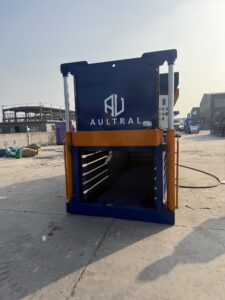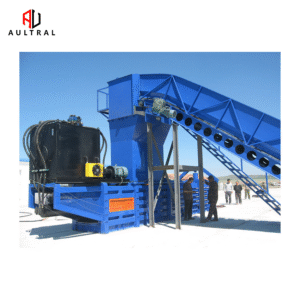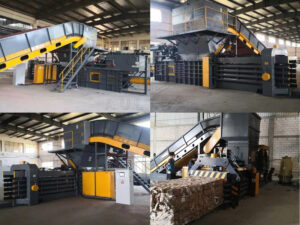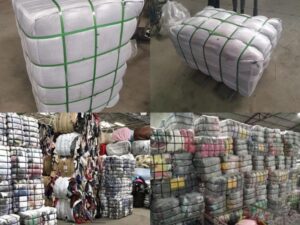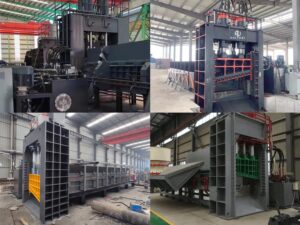Introduction
When investing in industrial equipment like shredders, balers, or shears, businesses face a critical decision: Should they buy new or used machinery? Both options have advantages and drawbacks, depending on budget, operational needs, and long-term goals.
This article provides a detailed cost-benefit analysis of purchasing new versus used industrial equipment, covering:
-
Upfront costs
-
Maintenance & lifespan
-
Performance & efficiency
-
Warranty & support
-
Resale value
-
Risk factors
By the end, you’ll have a clear understanding of which option is best for your business.
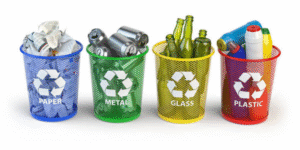
1. Upfront Cost Comparison
New Equipment: Higher Initial Investment
Purchasing brand-new machinery means paying a premium price, often 20-50% higher than used alternatives. However, this cost includes:
-
Latest technology (better efficiency, automation, safety features)
-
Full manufacturer warranty (typically 1-3 years)
-
Customization options (tailored to your production needs)
Best for: Businesses with strong capital, long-term growth plans, or strict compliance requirements.
Used Equipment: Lower Entry Cost
Used machines can cost 30-70% less than new ones, making them attractive for:
-
Startups or small businesses with limited budgets
-
Short-term projects
-
Secondary production lines
Risks: Unknown maintenance history, potential hidden defects, and outdated technology.
Key Takeaway:
✅ New = Higher initial cost but long-term reliability.
✅ Used = Immediate savings but higher risk of unexpected repairs.
2. Maintenance & Lifespan
New Machines: Lower Maintenance (Initially)
-
Minimal repairs in the first few years.
-
Predictable maintenance schedule (follow manufacturer guidelines).
-
Longer lifespan (15-20+ years with proper care).
Used Machines: Higher Maintenance Risks
-
Wear and tear may require immediate part replacements.
-
No service history means potential hidden issues.
-
Shorter remaining lifespan (depending on prior usage).
Mitigation Strategy:
-
Get a professional inspection before buying used.
-
Ask for maintenance logs (if available).
-
Budget 10-20% of purchase price for potential repairs.
Key Takeaway:
✅ New = Lower maintenance costs in early years.
✅ Used = Potentially higher upkeep but manageable with due diligence.
3. Performance & Efficiency
New Equipment: Peak Efficiency
-
Latest motors & hydraulics = Lower energy consumption.
-
Automation & smart controls = Reduced labor costs.
-
Higher throughput = Faster production cycles.
Used Equipment: Potential Efficiency Loss
-
Older models may lack energy-saving features.
-
Slower cycle times = Reduced productivity.
-
Outdated safety standards = Higher operational risks.
Key Takeaway:
✅ New = Best for high-volume, efficiency-focused operations.
✅ Used = Acceptable for low-demand or non-critical tasks.
4. Warranty & Manufacturer Support
New Machines: Full Coverage
-
Warranty (1-3 years typically) covers major repairs.
-
Access to OEM parts & service = Faster fixes.
-
Training & setup support included.
Used Machines: Limited or No Warranty
-
“As-is” sales mean no protection.
-
Harder to find replacement parts (if discontinued).
-
Third-party technicians may be needed.
Key Takeaway:
✅ New = Peace of mind with warranty & support.
✅ Used = Higher risk, but some dealers offer limited warranties.
5. Resale Value & Depreciation
New Equipment: Faster Depreciation
-
Loses 20-30% value in the first year.
-
After 5 years, retains 40-60% of original price.
Used Equipment: Slower Depreciation
-
Already depreciated, so resale value declines more slowly.
-
Good for short-term use before upgrading.
Key Takeaway:
✅ New = Higher initial loss but better long-term ROI if kept long enough.
✅ Used = Lower resale risk if bought at a fair price.
6. Risk Factors
| Factor | New Equipment | Used Equipment |
|---|---|---|
| Breakdown Risk | Low (under warranty) | Higher (unknown history) |
| Technology | Latest features | Possibly outdated |
| Financing | Easier (banks prefer new) | Harder (higher interest) |
| Customization | Fully customizable | Limited options |
Final Verdict: Which Should You Choose?
Buy NEW If:
✔ You need maximum reliability & efficiency.
✔ Your business depends heavily on uptime.
✔ You can afford higher upfront costs.
✔ You want full warranty & manufacturer support.
Buy USED If:
✔ You have a limited budget and need immediate savings.
✔ The machine is for secondary or occasional use.
✔ You can inspect & verify the machine’s condition.
✔ You’re okay with higher maintenance risks.
Conclusion
There’s no one-size-fits-all answer—budget, usage frequency, and risk tolerance determine whether new or used equipment is better.
-
New machines = Best for long-term, high-productivity operations.
-
Used machines = Ideal for cost-conscious buyers with flexibility.
Recommendation:
-
If buying used, always inspect the machine and check service records.
-
If buying new, compare financing options to ease cash flow.
By carefully weighing these factors, you’ll make the best decision for your business’s needs.

